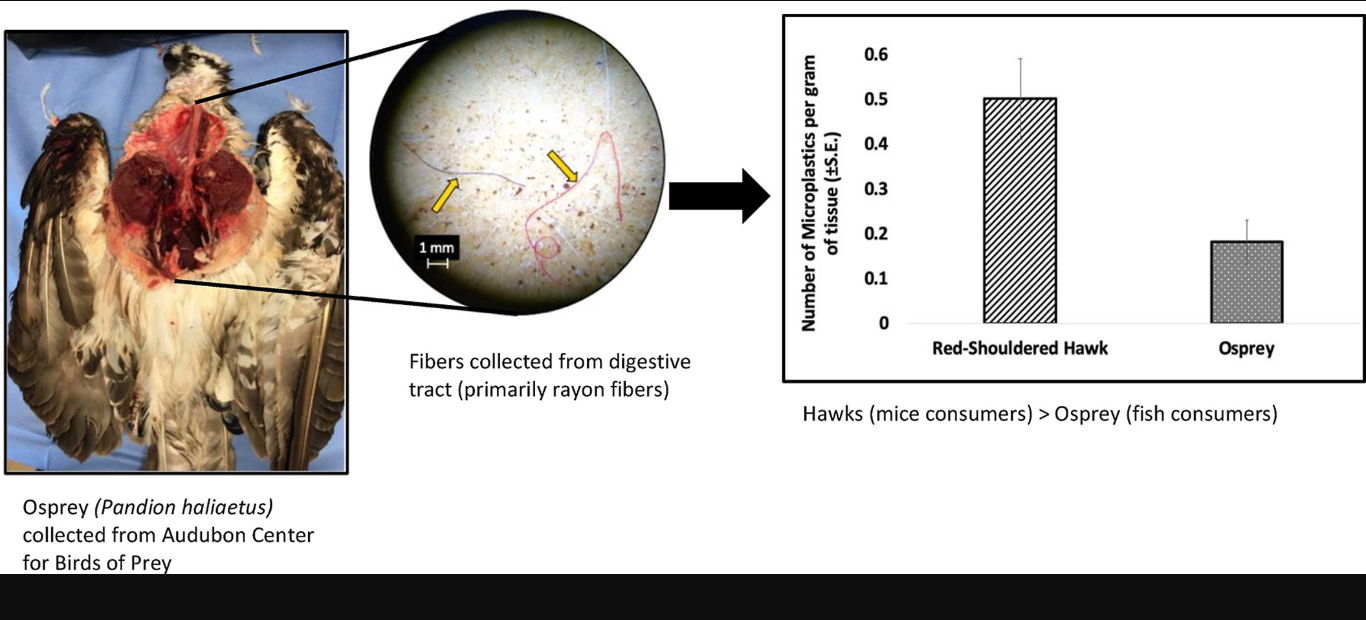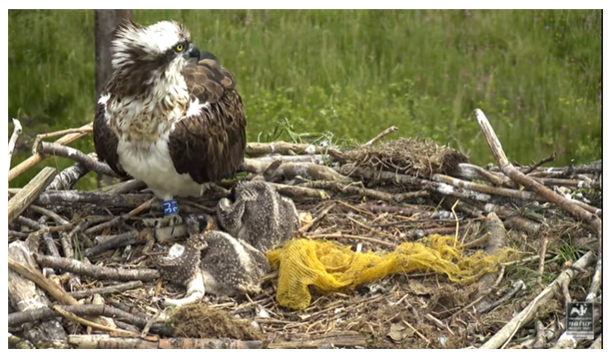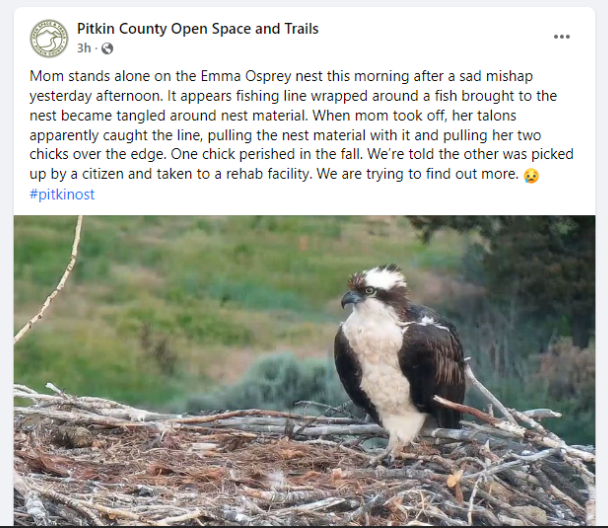Ospreys and the dangers of plastic
Ospreys and the dangers of plastic
It’s international plastic bag-free day on 3rd July. Plastic was hailed as a miracle material when it was first invented in New York under the name ‘Bakelite’ back in 1907. Now we know better. It’s a menace. According to National Geographic*(1) only 9% of plastic is recycled. Which means a whopping 91% isn’t, and clogs up our world, endangering lives and habitats as it stubbornly refuses to break down. 12 billion tons of plastic wastes are expected to be found in the natural environment by 2050 * (2)
Conservation Without Borders exciting new project The Flight of the Osprey (#FOTO) is going to follow Ospreys from the UK down along their migration route to their winter home in west Africa in order to highlight conservation issues they face on the way. One of those hazards is plastic pollution.
From http://www.plasticbagfreeday.org/ : “Plastic pollution is a global catastrophe and sadly it is a man-made one. Did you know that approximately 500 billion plastic bags are used on a global scale? Just think about how many of these bags will end up littered all over the planet. This is having an extremely detrimental effect on the environment, wildlife and indeed human health.
The marine ecosystem in particular is suffering immensely as a result of plastic pollution. 31 species of marine mammals are known to have ingested marine plastic whilst over 100 species of sea birds have ingested plastic artefacts. Over 250 species have become entangled in plastic, whilst entanglement rates of approximately eight percent have been discovered in some sea lion and seal species.”
In a recent study*(3), while microplastics were significantly more abundant per gram in the gastrointestinal tract tissue of other raptors who consume small mammals, snakes, and amphibians, than Ospreys, plastic was present, and assumed to have been ingested from the fish on which they feed exclusively.

Ospreys are far more likely to suffer death or injury from entanglement or suffocation than from ingestion.
Here are some examples from forum chatters:
Stephanie Scofield says: Border Ospreys had a near disaster with baler twine. One of the chicks ended up with it around its neck. The Osprey Project management took the decision to forego their usual hands-off policy as this was a man made situation, and in the absence of the licensed ringer, permission was granted for a tree surgeon to climb up and free the chick. Full story here https://borderospreys.co.uk/2022/06/14/near-disaster/
Osprey Fan says: The worst I have seen was last year at the Dyfi Osprey Project. Telyn, the breeding female, brought the plastic mesh bag to the nest, but it ended up tangled around the adult male's leg. He flew off with it like that and wasn't seen for what felt like an eternity, but did return later that day without it.

Sadly it was too late for the Pitkin County chick in Emma, Colorado, Jeff K says: two chicks lost to the family, pulled off the nest by being entangled in plastic twine. One died on impact, the other one in rehab with internal injuries and an uncertain future. The photo shows the poignant sight of the mother Osprey standing on the empty nest.

https://www.pitkincounty.com/DocumentCenter/View/8982/Osprey---Find-Out-More?bidId=
Cathy Cohen says: the death of a baby osprey highlights the danger of litter after an osprey chick died at the Pink Shell Osprey nest in Fort Myers Beach, Florida in April. More here: https://www.fortmyersbeachtalk.com/2022/04/15/death-of-baby-osprey-highlights-lethal-danger-of-litter/
There was a happy ending though, as an Osplet who’d fallen from another nest was translocated to Pink Shell and eventually adopted by the adult female. The crew first removed an assortment of plastic and litter before placing the chick in the nest, watch here: https://youtu.be/tlaAhqMe-qI
And san b tells of this tragic occurrence: One of the Charlo chicks was badly injured last year while entangled in plastic baling twine and had to be euthanized. Read the full sad story here: http://archive.kuow.org/post/fatal-attraction-ospreys-bind-baling-twine-fishing-line
Angela Bailey provided this information from the Audubon Society about the effect of plastic on Ospreys. Ben Wurst, an Osprey expert at the Conserve Wildlife Foundation of New Jersey, spends much of his time responding to reports of Osprey nests laced with trash and climbing ladders to remove the manmade materials. Osprey find plastic trash mixed in with their natural nesting materials, making it hard for them to distinguish what’s what, resulting in dangerous trash, much of it plastic, being brought back to the nest. Read more here: https://www.audubon.org/news/more-plastic-world-means-more-plastic-osprey-nests
Scyllabub tells of a less tragic event when resident male LM12 (Laddie) brought a rubber gardening glove to the Loch of the Lowes Osprey nest in Scotland in April this year. His mate NC0 was not impressed and after many attempts, finally managed to bury it under the nest furnishings. Here’s the moment it arrived: https://youtu.be/WWvi3EuEnzY
We all have our part to play in preventing wildlife and the environment from suffering the consequences of plastic pollution. Unfortunately the Covid 19 pandemic saw a rise in plastic bag use as we tried to keep ourselves and our shopping isolated from the deadly virus. But we know how to cope with coronavirus now, and on International Plastic bag-free day let’s try harder to #ReUse #ReCycle and #SayNoToPlastic, and perhaps, build better habits year round and for the future too.
International Plastic Bag Free Day was created by Bag Free World. It was created as a worldwide initiative for the purpose of getting rid of the single-use of plastic bags around the world. It is all about promoting environmental conservation by encouraging us all to stay away from the use of plastic bags and instead look for more eco-friendly alternatives.
If we can do it on this one date, then we can do it for the rest of the year, right? The day is also important in terms of increasing awareness of the dangers and the harm that is associated with plastic bags in terms of the impact they have on marine life, animal life, and nature. So, it is good to share awareness and use your voice on this date.
There are a lot of good ways to celebrate, and the easiest requires a simple resolution on your part. Even if just for one day, choose paper over plastic, or even better bring your own bags to the retailers to pick up your goods.
http://www.plasticbagfreeday.org/
To sum up, here’s a quote from Haillie Mesics, Public Relations and Marketing Director at the Clinic for the Rehabilitation of Wildlife (CROW):
“Ospreys will use anything to build their nests so it is our responsibility as stewards of the environment to not litter or leave man-made materials in the wild. The future of our ecosystems, water quality, wildlife, and public health depend on clean and healthy environments.”
Many thanks to everyone who contributed, apologies if I didn’t use your contribution but in a sad reflection of our times I received so many examples this blog would never have ended.
Written by Geemeff
*(1) https://education.nationalgeographic.org/resource/whopping-91-percent-plastic-isnt-recycled
*(2) https://www.ncbi.nlm.nih.gov/pmc/articles/PMC8561682/#CR35*(3) https://www.sciencedirect.com/science/article/abs/pii/S0269749119352674
*(3) https://www.sciencedirect.com/science/article/abs/pii/S0269749119352674

